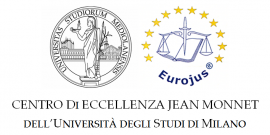EU’s restrictive measures in Ukraine before the CJEU: taking stock
Le misure restrittive, che sono uno strumento utilizzato per indurre un cambiamento nella politica o nella condotta di un Paese, di un’entità (società) o di un individuo in contrasto con gli obiettivi e i valori dell’UE, non sono sistematicamente e completamente regolamentate dal diritto dell’Unione europea. Infatti, le norme che disciplinano tali misure sono collocate in parte nel TUE, in parte nel TFUE, in parte in strumenti di “soft law” e non vi sono regole procedurali specifiche ma vengono applicati principi generali. Pertanto, il presente articolo intende innanzitutto esaminare le possibili classificazioni delle misure restrittive e le modalità di adozione e di applicazione delle stesse. In secondo luogo, si concentra sull’analisi delle sentenze più recenti della Corte di giustizia dell’Unione europea inerenti alle misure restrittive adottate dal Consiglio per congelare i beni di soggetti appartenenti alla classe politica ucraina, responsabili dell’appropriazione indebita di fondi statali ucraini. Da questa analisi emerge che la mancanza di regolamentazione ha conseguenze sulla giurisprudenza, che, di fatto, ha subìto un’evoluzione nel corso degli anni e ha fissato regole sempre più dettagliate in merito all’adozione di tali misure. Di conseguenza, il Consiglio sta cercando di riformare la sua “listing procedure” per soddisfare i requisiti stabiliti dalla Corte.
Per leggere l’intero articolo, clicca qui
Restrictive measures, which are a tool designed to bring about a change in the policy or activity of a country, entity or individual in contrast with the EU’s objectives and values, are not systematically and fully regulated in EU law. In fact, the rules governing such measures are placed in the TEU, in the TFEU, in “soft law” instruments and there are no specific procedural rules but general principles are applied. Therefore, the present contribution firstly seeks to survey the various possible classifications of restrictive measures and the ways in which they are adopted and applied. Secondly, it focuses on the analysis of the most recent CJEU’s rulings inherent to restrictive measures adopted by the Council to freeze the assets of individuals of the Ukrainian political class responsible for the misappropriation of Ukrainian state funds. From this analysis, it emerges that the lack of regulation has consequences in the case-law, which, in fact, has undergone an evolution over the years and has set increasingly detailed rules concerning the adoption of restrictive measures. As a consequence, the Council is trying to reform its listing procedure to meet the requirements set out by the CJEU.
To read the full article, click here


